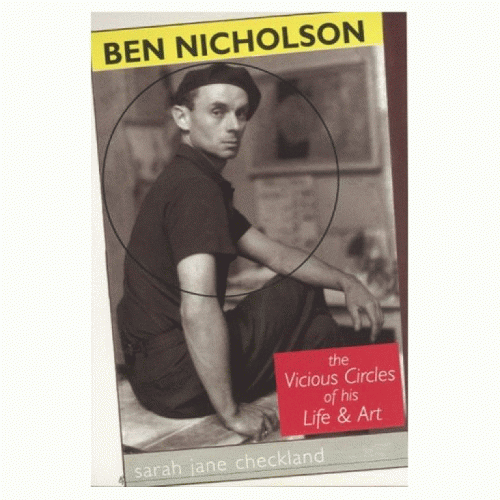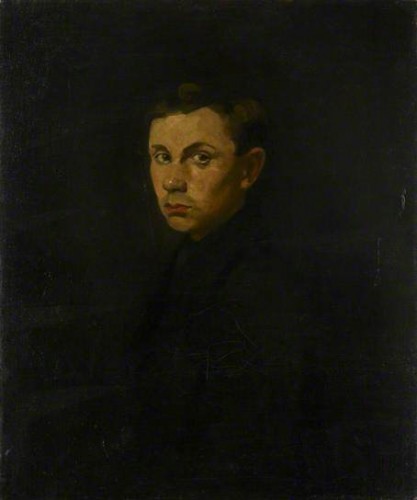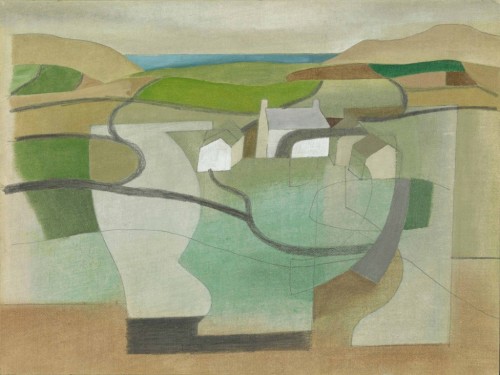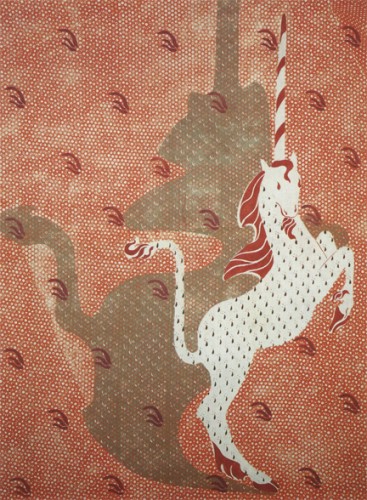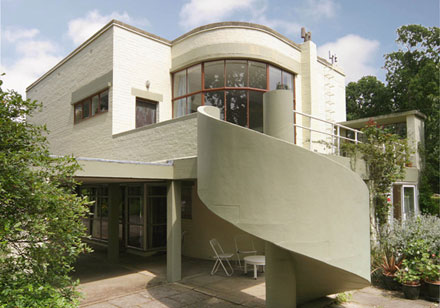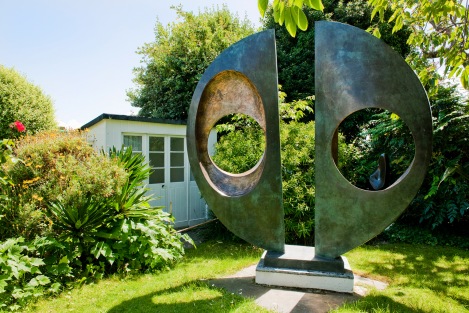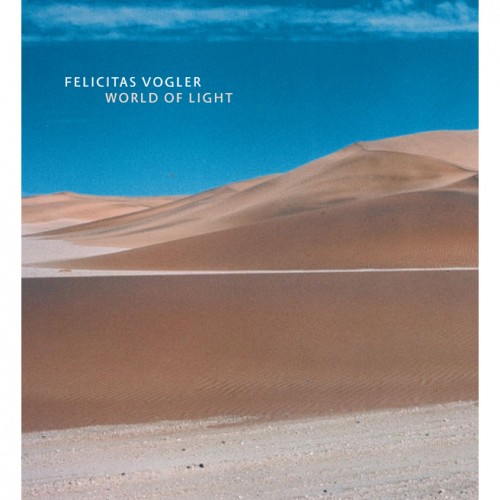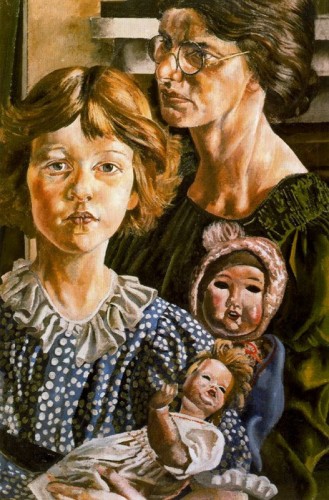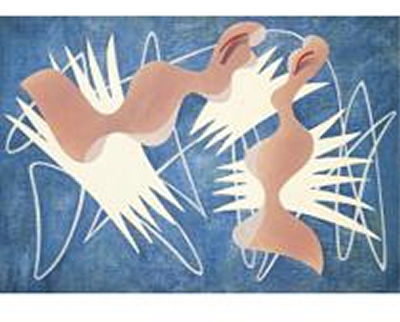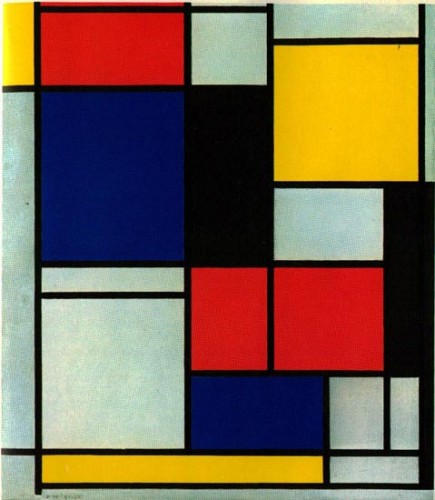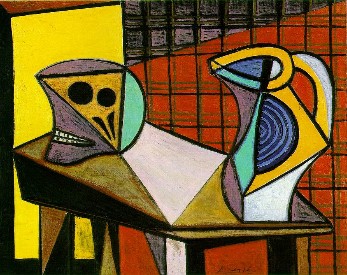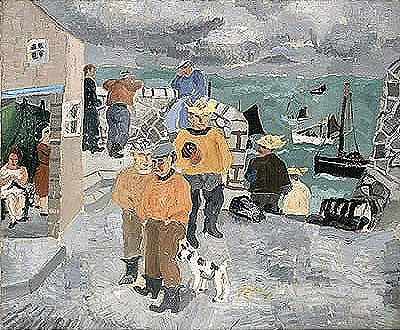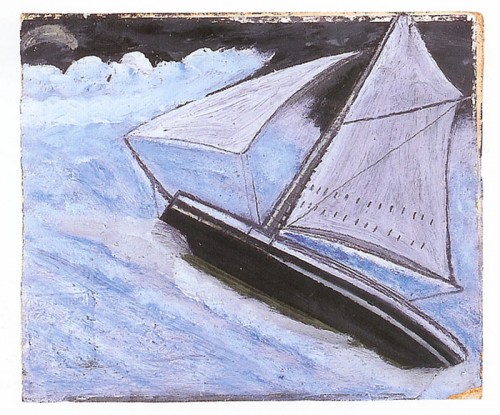Posted by Richard Rawlinson
The portrait below by Mabel Pryde is of her son, British painter Ben Nicholson, as a teenager studying at the Slade School of Fine Art between 1910-1914. His face appearing out of darkness somehow captures both the confidence and insecurity of youth. The mood, evoked by both expression and compositional simplicity, brings to mind Rembrandt, and yet there’s the hint of the dawning modern age.
Ben Nicholson – Mabel Pryde
Nicholson was exempted from military service in World War I due to asthma. His brother Anthony died in action, and his mother died in the flu epidemic of 1918.
Nicholson himself lived to a ripe old age (d. 1982), becoming a leading light of the British abstract movement.
Ben Nicholson – Cornish Landscape
His talent was inherited from both sides of the family, his father Sir William Nicholson being famous for brilliant illustrations such as his Alphabet series.
William Nicholson – A
Ben’s sister Nancy was an accomplished fabric designer.
Nancy Nicholson – Fabric design
Ben’s brother Christopher was an architect, whose work includes Augustus John’s studio.
Christopher Nicholson
Ben married three times, first to artist Winifred Nicholson:
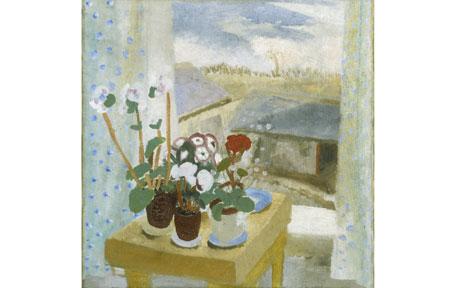 Winifred Nicholson – Still Life
Winifred Nicholson – Still Life
Ben’s second wife was sculptor Barbara Hepworth:
Barbara Hepworth – Two Forms (Divided Circle)
Ben’s third wife was photographer Felicitas Vogler:
Felicitas Vogler
One of Ben’s contemporaries at art school was Stanley Spencer:
Stanley Spencer – Hilda, Unity and dolls
Another art school contemporary was Edward Wadsworth:
Edward Wadsworth – Abstract
Another art school contemporary was war artist Paul Nash:
Paul Nash – The Ypres Salient at Night
During trips to Paris, Ben met Mondrian and Picasso who inspired his abstract and cubist direction:
Piet Mondrian – Composition
Picasso – Skull and Pitcher
Christopher Wood – St Ives
But much of the distinct Britishness of his work stems not just from Slade influences and London society including Hepworth in Henry Moore. Now famously linked to the St Ives artist colony, he first visited the Cornish fishing village in 1928 with fellow painter Christopher Wood. There, he met the fisherman and painter, Alfred Wallis, whose naïve style, often capturing the perilous power of the sea, had a profound impact. Although propelled into a circle of the most progressive artists of the 1930s, Wallis never sold many works, and died in poverty in a Penzance workhouse. Nicholson said, ‘To Wallis, his paintings were never paintings but actual events’.
Alfred Wallis
The works of both Wallis and Nicholson can be seen at Tate St Ives. Last November, Nicholson’s Sept 53 (Balearic) sold for $1,650,500 at Christie’s, New York:

